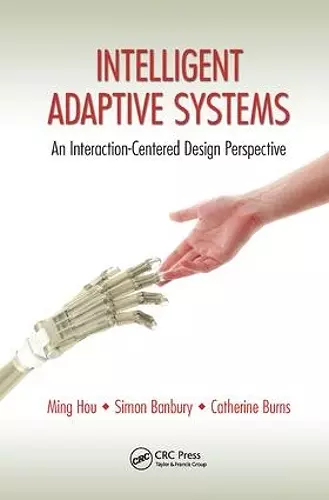Intelligent Adaptive Systems
An Interaction-Centered Design Perspective
Catherine Burns author Ming Hou author Simon Banbury author
Format:Paperback
Publisher:Taylor & Francis Ltd
Published:12th Oct '17
Currently unavailable, and unfortunately no date known when it will be back
This paperback is available in another edition too:
- Hardback£130.00(9781466517240)

As ubiquitous as the atmosphere, intelligent adaptive systems (IASs) surround us in our daily lives. When designed well, these systems sense users and their environments so that they can provide support in a manner that is not only responsive to the evolving situation, but unnoticed by the user. A synthesis of recent research and developments on IASs from the human factors (HF) and human–computer interaction (HCI) domains, Intelligent Adaptive Systems: An Interaction-Centered Design Perspective provides integrated design guidance and recommendations for researchers and system developers.
The book explores a recognized lack of integration between the HF and HCI research communities, which has led to inconsistencies between the research approaches adopted, and a lack of exploitation of research from one field by the other. The authors integrate theories and methodologies from these domains to provide design recommendations for human–machine developers. They then establish design guidance through the review of conceptual frameworks, analytical methodologies, and design processes for intelligent adaptive systems. The book draws on case studies from the military, medical, and distance learning domains to illustrate intelligent system design to examine lessons learned.
Outlining an interaction-centered perspective for designing an IAS, the book details methodologies for understanding human work in complex environments and offers understanding about why and how optimizing human–machine interaction should be central to the design of IASs. The authors present an analytical and design methodology as well as an implementation strategy that helps you choose the proper design framework for your needs.
"This book describes the introduction of automation technologies as a revolution in warfare comparable to the atomic bomb, which is almost certainly true. As such the associated changing role of the human in this revolution in warfare and means and methods by which the human interacts with automation is crucial. The book therefore provides a valuable resource by delivering a comprehensive overview of the current state of thinking as well as the issues and methodologies associated with the development of the human component of increasingly automated and autonomous systems."
—Ian Ross, BAE Systems
"An excellent guide to the design of intelligent adaptive systems that will be useful to researchers and systems engineers in a variety of work domains. Comprehensive, easy to read, with many figures and illustrations and case studies of incidents and accidents. Should be on the desk on anyone interested in human factors, systems design, and human-automation interaction."
—Raja Parasuraman, George Mason University, Fairfax, Virginia
"… addresses the most important emerging issue in man-machine systems: the teaming of human and machine intelligence to conduct missions in complex environments. … does an excellent job of reviewing the pertinent literature in order to develop a basic framework for intelligent adaptive systems."
—Mr. Michael J Barnes, US Army Research Laboratory
"Quintessential reading for scientists, engineers, practitioners, designers and anyone interested in building and using 21st century human-computer symbiosis technologies. … A must read for any serious professional in academia, government or industry. This book documents, illustrates and demonstrates the futuristic vision that J.C. Licklider envisioned in 1960 has arrived."
—Dylan Schmorrow, Soar Technology, Inc.
"As an operator of military aircraft, I was fascinated right from the start of the first chapter. Having worked with human factors specialists and the designers of robotic support systems in the past, I thought I had a good idea what I would have liked to see in a book about intelligent adaptive systems. But I was amazed how the authors managed to introduce you to real-world examples, present the available academic knowledge, and then lead you through the best practices for the design of intelligent adaptive systems. They never forget that these IAS should not make humans redundant or present a new burden in a complex and extremely challenging environment. I especially liked the idea about the human-machine interaction as a partnership, since this is what the operators of manned and unmanned aircraft need to be able achieve their greatest potential in a wide range of missions and challenges."
—Roland Runge, German Air Force
ISBN: 9781138747784
Dimensions: unknown
Weight: 620g
331 pages